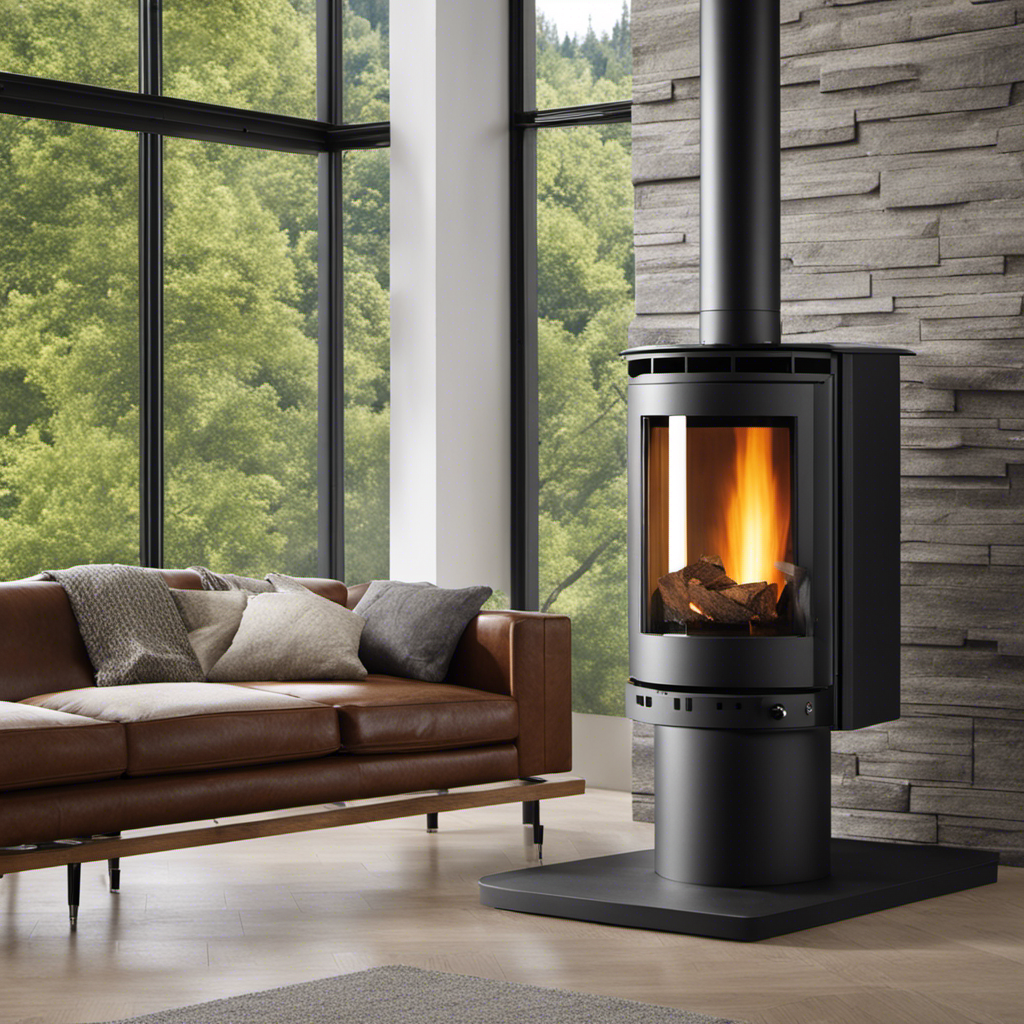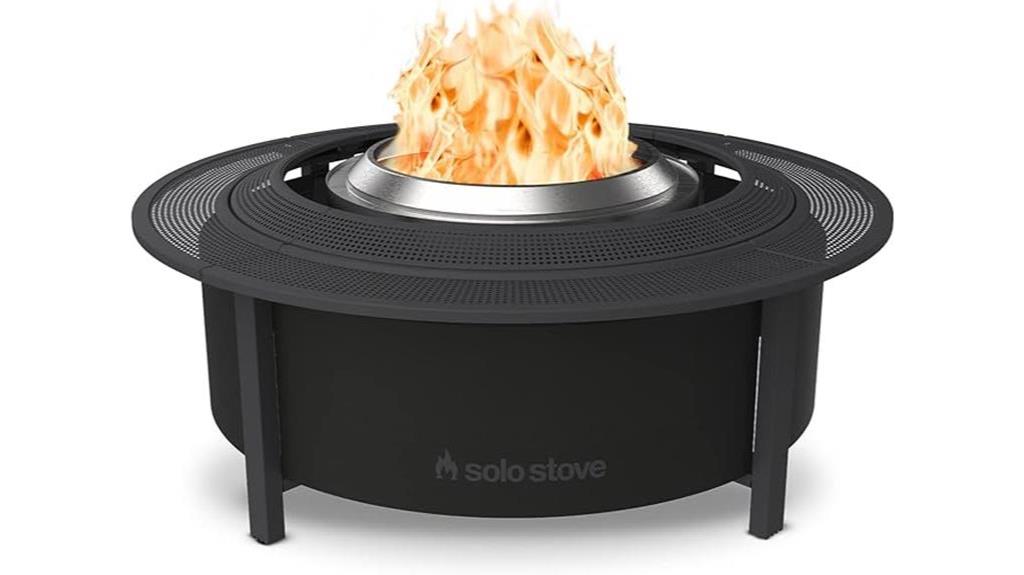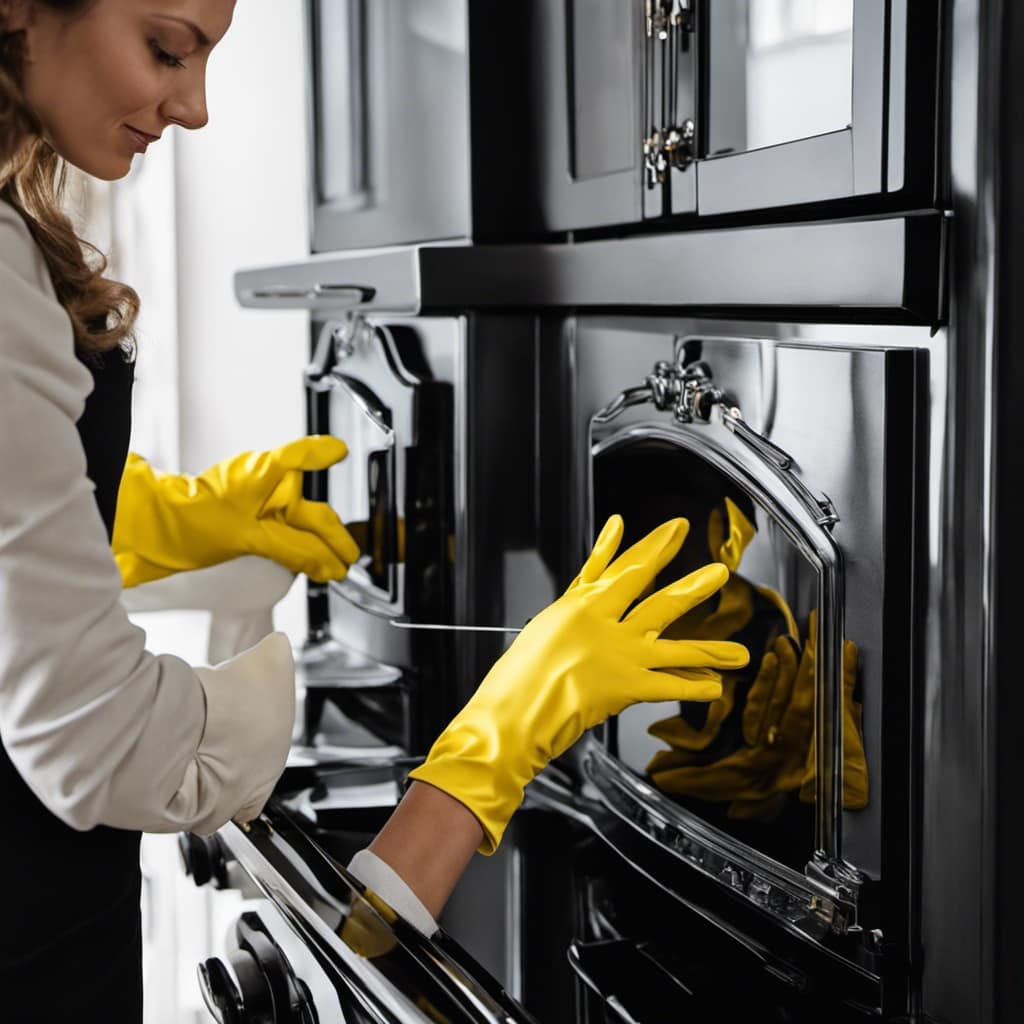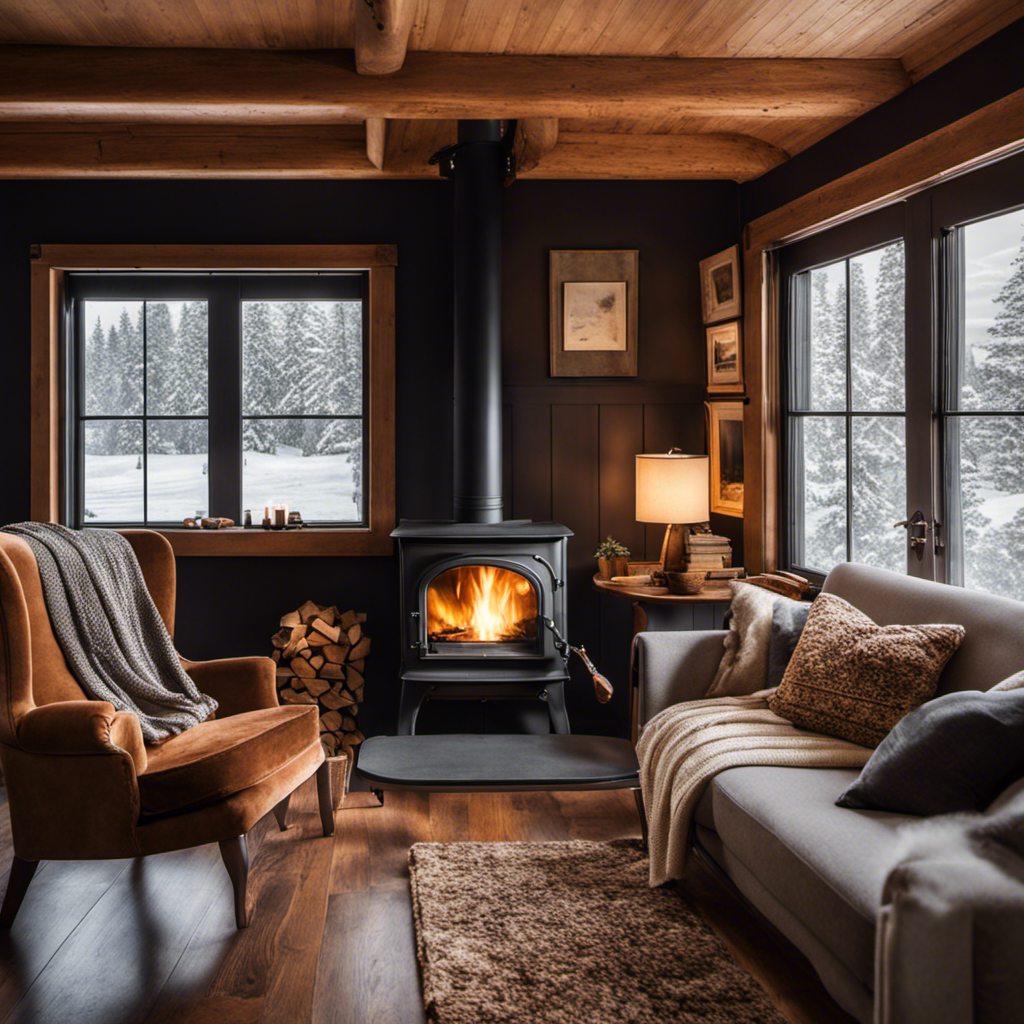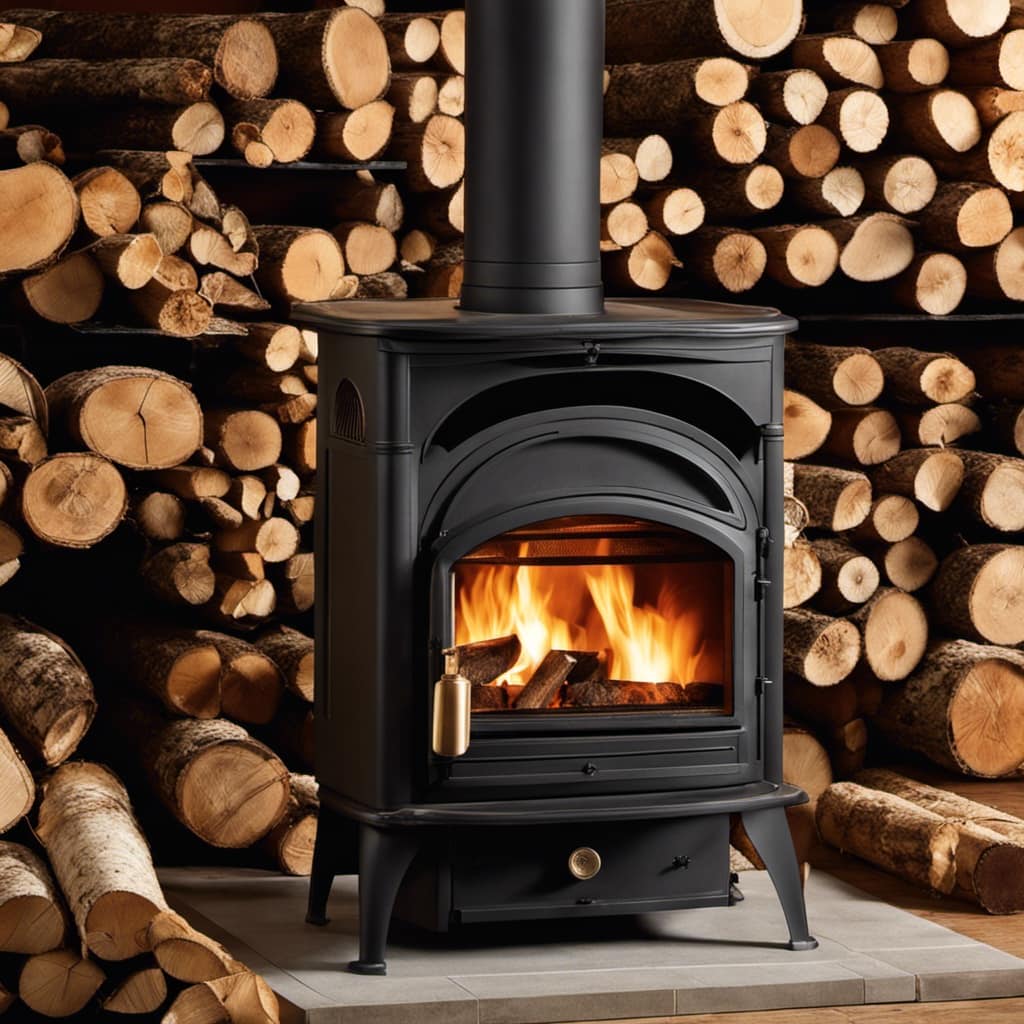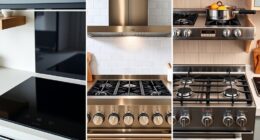As someone who frequently uses a wood stove, I often ponder what the optimal temperature for a wood stove pipe should be. This inquiry is vital for maintaining both security and effectiveness.
Understanding the optimal temperature range and the signs of overheating or underheating is essential.
In this article, I will provide you with the technical details and informative tips to maintain the right temperature in your wood stove pipe.
So let’s delve into the world of wood stove pipe temperatures and ensure a cozy and controlled burn.
Key Takeaways
- Proper temperature ensures safe and efficient operation.
- The ideal temperature range for efficient operation is 300-400 degrees Fahrenheit.
- Monitoring and maintaining the optimal temperature range is essential.
- Factors such as fuel type, air flow, insulation quality, and pipe size/design affect the wood stove pipe temperature.
Importance of Maintaining the Right Temperature
I can’t stress enough the importance of keeping the wood stove pipe at the right temperature. Common temperature fluctuations in wood stove pipes can have a significant impact on their performance.
When the temperature is too low, it can lead to poor draft and inefficient combustion. This can result in a buildup of creosote and other harmful byproducts, increasing the risk of a chimney fire.
On the other hand, if the temperature is too high, it can cause damage to the stove pipe, leading to cracks or warping. This can compromise the integrity of the system and potentially release harmful gases into your home.
It’s crucial to monitor and regulate the temperature to ensure optimal performance and safety of your wood stove pipe.
Factors Affecting Wood Stove Pipe Temperature
There are several factors that can directly affect the temperature of a wood stove pipe, such as the type of fuel used and the amount of air flow. Understanding these factors is crucial for maintaining the longevity of the wood stove pipe and ensuring optimal efficiency of the wood stove.
Here are five key factors that can impact the temperature of a wood stove pipe:
-
Type of fuel: Different types of fuel burn at different temperatures, which can affect the overall temperature of the wood stove pipe.
-
Air flow: Proper air flow is essential for maintaining a consistent and efficient burn. Insufficient air flow can lead to lower temperatures, while excessive air flow can cause high temperatures that may damage the wood stove pipe.
-
Insulation: The quality of insulation around the wood stove pipe can impact its temperature. Proper insulation can help retain heat and prevent the pipe from getting too hot.
-
Size and design of the wood stove pipe: The size and design of the pipe can also affect its temperature. A larger pipe may allow for better heat transfer, while a smaller pipe may lead to higher temperatures.
-
Maintenance: Regular cleaning and maintenance of the wood stove pipe can prevent blockages and ensure proper airflow, which in turn can help maintain the desired temperature.
Understanding these factors is crucial for maintaining the longevity of the wood stove pipe and ensuring optimal efficiency of the wood stove. Improper temperature can negatively impact the efficiency of the wood stove, leading to incomplete combustion, increased fuel consumption, and potential damage to the wood stove pipe.
Therefore, it’s important to find the optimal temperature range for efficient operation, which will be discussed in the next section.
Optimal Temperature Range for Efficient Operation
The optimal temperature range for efficient operation of a wood stove pipe is crucial for maintaining its longevity and ensuring optimal efficiency. When it comes to wood stove efficiency, the temperature of the stove pipe plays a significant role.
The ideal temperature range for a wood stove pipe is between 300 and 400 degrees Fahrenheit. Operating within this range allows for complete combustion of the wood, minimizing creosote buildup and maximizing heat transfer.
Below this range, the stove may not burn efficiently, leading to incomplete combustion and wasted fuel. On the other hand, exceeding this temperature range can cause excessive heat, potentially damaging the stove pipe or surrounding materials.
Monitoring and maintaining the optimal temperature range is essential for a safe and efficient wood stove operation.
Signs of Overheating or Underheating in a Wood Stove Pipe
Experiencing excessive creosote buildup and a lack of heat transfer, I suspect that my wood stove pipe may be both overheating and underheating due to improper temperature regulation. To address this issue, I’ve researched common causes and gathered troubleshooting tips to better understand and solve the problem.
Here are some key points I’ve discovered:
- Insufficient air supply: Make sure that the air vents are open and unobstructed to allow for proper combustion.
- Damaged or blocked chimney: Check for any obstructions such as debris or bird nests and ensure that the chimney is in good condition.
- Incorrect pipe size: Ensure that the diameter of the stove pipe matches the specifications recommended by the manufacturer.
- Inadequate insulation: Make sure that the stove pipe is properly insulated to prevent excessive heat loss and to maintain optimal temperature.
- Improper stove operation: Follow the manufacturer’s guidelines for operating the wood stove and avoid overloading it with excessive amounts of wood.
Tips for Maintaining the Right Temperature in Your Wood Stove Pipe
To maintain the right temperature in my wood stove pipe, I can use a thermometer and regularly monitor it, while also adjusting the airflow as needed.
In addition to these steps, it’s important to consider the use of insulating materials for wood stove pipes. Insulating materials, such as ceramic fiber insulation or double-wall pipes, can help to minimize heat loss and maintain a consistent temperature within the pipe. This is especially important in colder climates or when the stove is located in an area with drafts.
It’s also worth troubleshooting low temperature issues in wood stove pipes. Factors such as a blocked or dirty chimney, insufficient fuel, or a malfunctioning damper can all contribute to lower temperatures. By identifying and addressing these issues, it’s possible to maintain optimal temperature levels in the wood stove pipe.
Frequently Asked Questions
How Often Should I Check the Temperature of My Wood Stove Pipe?
I check the temperature of my wood stove pipe regularly to ensure it’s operating safely. By using a thermometer, I can measure the temperature accurately. Signs of a damaged pipe include discoloration or warping.
Can I Use a Wood Stove Pipe With a Different Temperature Range Than Recommended?
Can’t compromise on correct temps for wood stove pipe. Using it in extreme temps? Risky business. Alternative materials exist, but stick to recommended ranges for safety and efficiency. Don’t mess with fire.
What Are the Potential Consequences of Operating a Wood Stove Pipe at a Temperature Outside the Optimal Range?
Potential consequences and safety concerns arise when operating a wood stove pipe outside the optimal temperature range. Structural damage, increased risk of fire, and inefficient combustion are among the risks.
Are There Any Specific Regulations or Guidelines for Wood Stove Pipe Temperature?
There are specific regulations and guidelines for wood stove pipe temperature. It’s important to adhere to these to ensure safe operation. Failure to comply with these regulations can have serious consequences.
Is It Possible to Adjust the Temperature of a Wood Stove Pipe?
Yes, it is possible to adjust the temperature of a wood stove pipe. By regulating the airflow and fuel supply, you can maintain the desired temperature. It is important to follow safety guidelines and manufacturer instructions.
Conclusion
In conclusion, maintaining the right temperature in your wood stove pipe is crucial for efficient operation. Just like a symphony conductor, you must find the perfect balance, allowing the heat to dance gracefully through the pipe without causing any damage.
Keep a watchful eye for signs of overheating or underheating, and make necessary adjustments to ensure optimal performance. With proper temperature management, your wood stove pipe will harmoniously keep your home warm and cozy.
Logan’s affair with adventure began in childhood. He hailed from a small town where vast forests bordered one side and endless shores stretched on the other. His days were spent exploring uncharted woods, climbing tall trees, or listening to the tales of old sailors. This early immersion in a world brimming with stories and mysteries became the foundation of his passion for writing.

